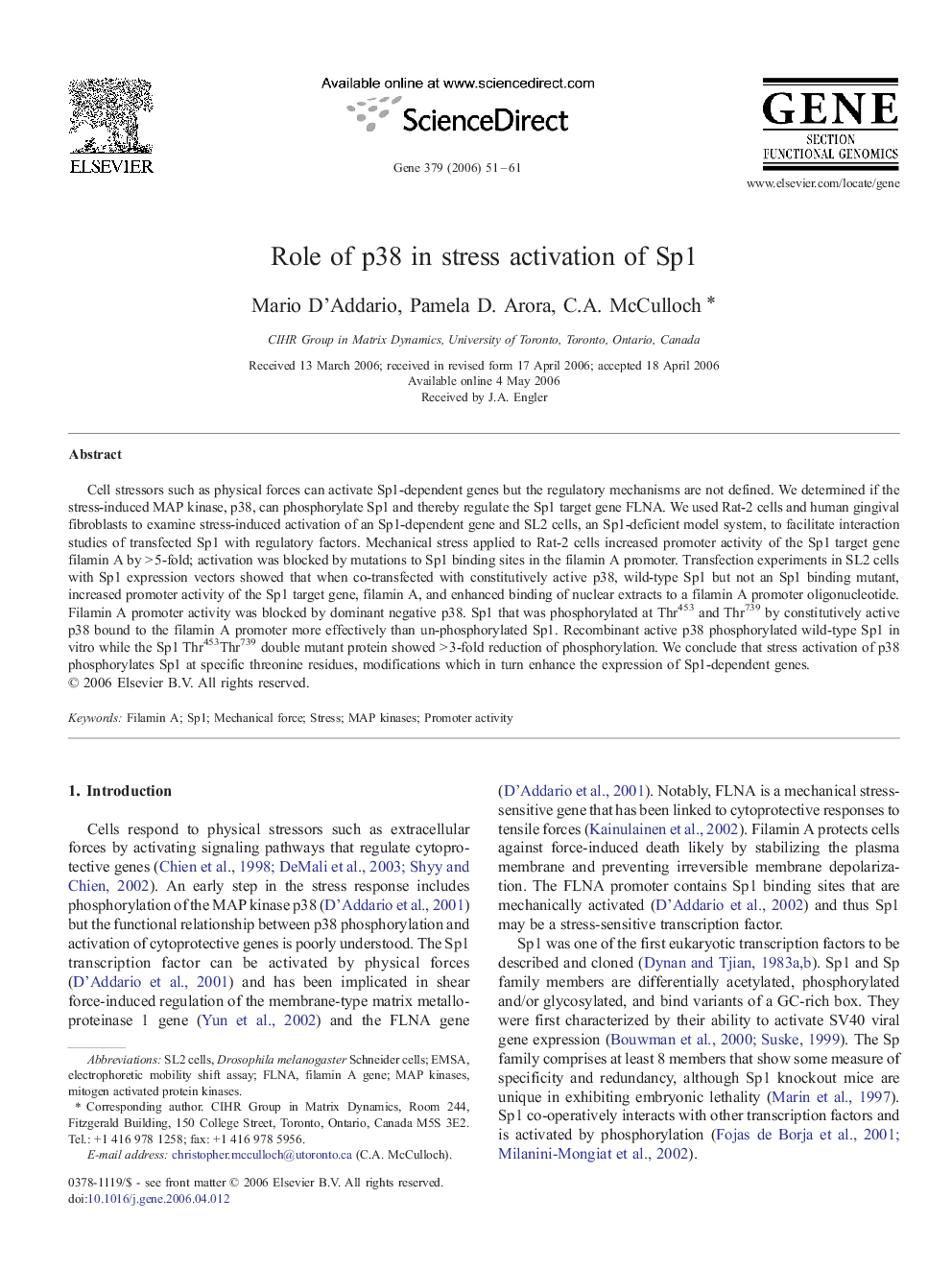| Article ID | Journal | Published Year | Pages | File Type |
|---|---|---|---|---|
| 2820148 | Gene | 2006 | 11 Pages |
Cell stressors such as physical forces can activate Sp1-dependent genes but the regulatory mechanisms are not defined. We determined if the stress-induced MAP kinase, p38, can phosphorylate Sp1 and thereby regulate the Sp1 target gene FLNA. We used Rat-2 cells and human gingival fibroblasts to examine stress-induced activation of an Sp1-dependent gene and SL2 cells, an Sp1-deficient model system, to facilitate interaction studies of transfected Sp1 with regulatory factors. Mechanical stress applied to Rat-2 cells increased promoter activity of the Sp1 target gene filamin A by > 5-fold; activation was blocked by mutations to Sp1 binding sites in the filamin A promoter. Transfection experiments in SL2 cells with Sp1 expression vectors showed that when co-transfected with constitutively active p38, wild-type Sp1 but not an Sp1 binding mutant, increased promoter activity of the Sp1 target gene, filamin A, and enhanced binding of nuclear extracts to a filamin A promoter oligonucleotide. Filamin A promoter activity was blocked by dominant negative p38. Sp1 that was phosphorylated at Thr453 and Thr739 by constitutively active p38 bound to the filamin A promoter more effectively than un-phosphorylated Sp1. Recombinant active p38 phosphorylated wild-type Sp1 in vitro while the Sp1 Thr453Thr739 double mutant protein showed > 3-fold reduction of phosphorylation. We conclude that stress activation of p38 phosphorylates Sp1 at specific threonine residues, modifications which in turn enhance the expression of Sp1-dependent genes.
